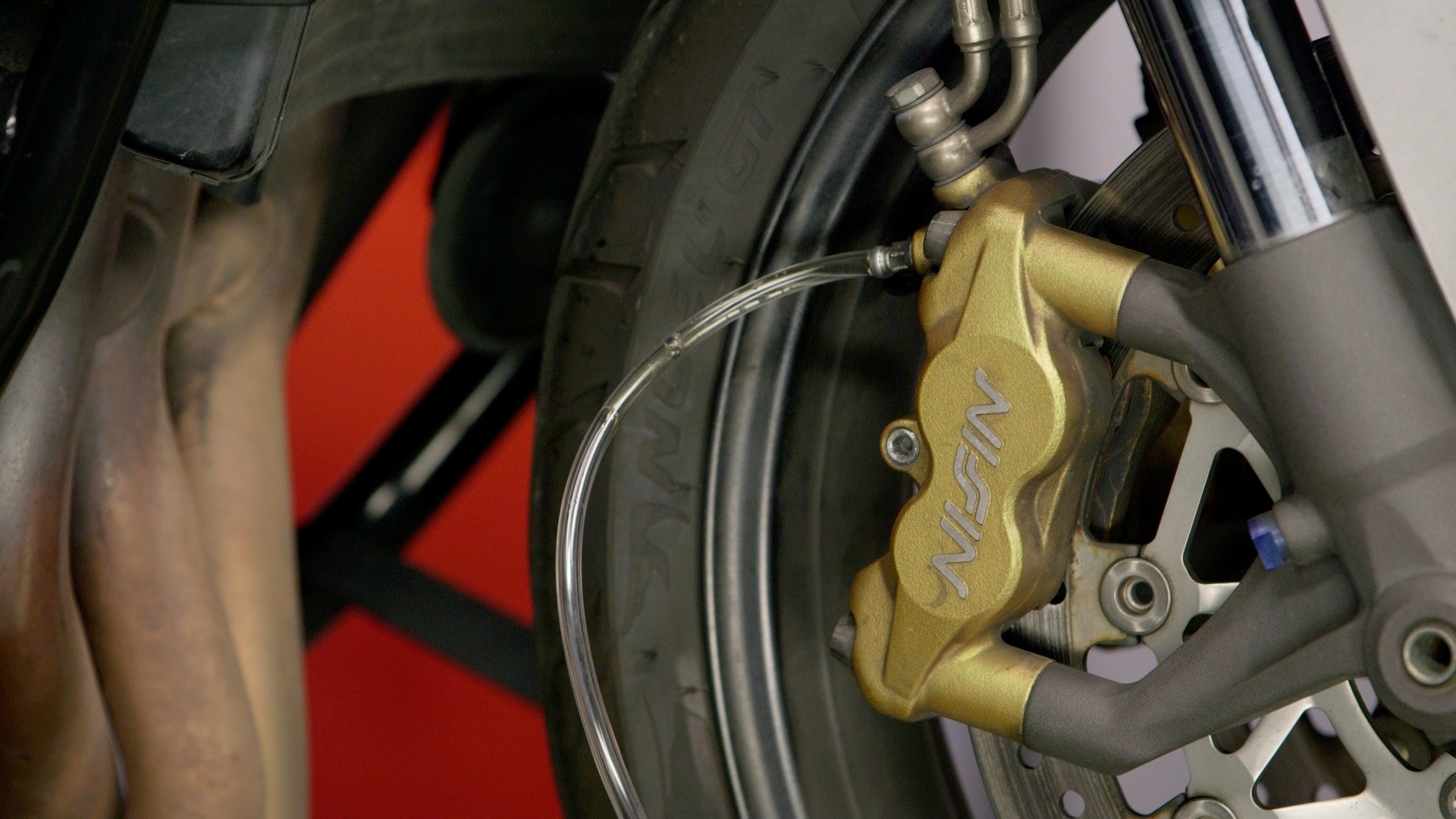Most motorcycle braking systems are similar to the disc brake system found in cars, with the majority of motorcycles using front- and rear-disc brake systems. However, some motorcycles still use drum brakes.

The main difference in motorcycle braking systems lies in how the brakes are triggered. Unlike cars, most motorcycles use separate controls for the front and rear brakes. The front brake is activated by a lever on the right side of the handlebar, while the rear brake is operated with a foot pedal on the right side. This allows the rider to engage the front brakes first, which carry most of the braking load and increase safety in most situations. Alternatively, some motorcycles engage both brakes with the handlebar lever, delaying the onset of the rear brake for the rider. Although riders debate whether this configuration offers a safer ride, it is largely a matter of personal preference.
Regardless of the method used to trigger motorcycle brakes, they function the same way. A cable or lever engages the master cylinder, causing a piston to apply pressure on the brake fluid. As brake fluid is incompressible, the pressure is then transferred through the brake lines to another piston located in the brake caliper. The caliper then applies pressure on the brake pads.
This pressure causes the brake pads to come into contact with the rotor, which is attached to the wheel. The friction between the rotor and pads converts the kinetic energy of the motorcycle into heat, slowing the bike. Because motorcycle wheels are fully exposed, the rotors and pads dissipate heat effectively.
Brake boosters are not necessary on most motorcycles. For lighter models, most riders can supply sufficient force for braking.
It should be noted that motorcycle brake rotors are rarely solid, smooth discs. The open design that helps cool the brakes also exposes them to water from the environment and wet roadways. Slots and cross-drilling increase safety by carrying water (and steam created through contact with hot rotors) away from the rotor, reducing the chance of interference with rotor/pad contact and brake efficiency. These tips come from expert motorcycle detailers.